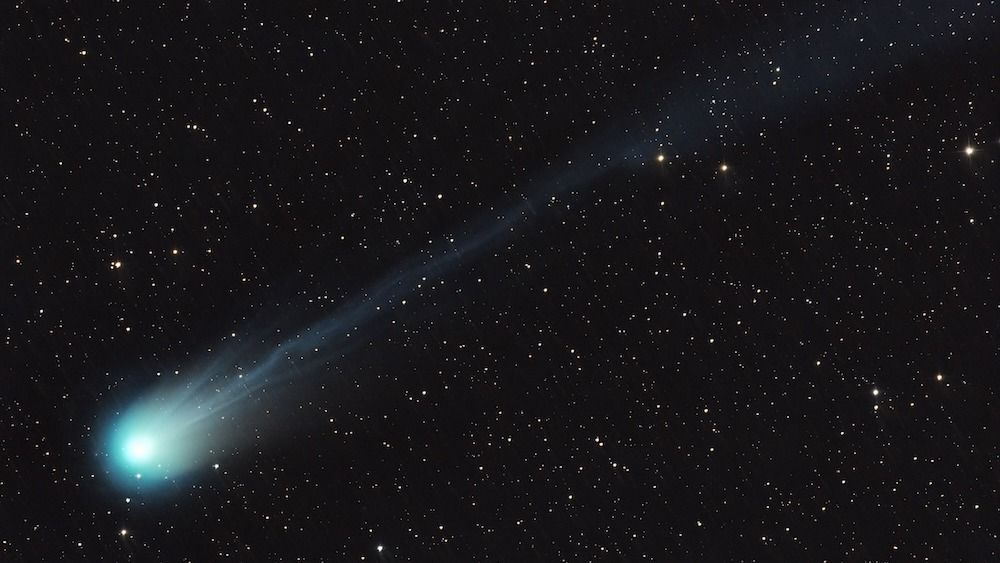Follow us on Google News (click on ☆)

The comet 12P/Pons-Brooks observed in March. It is currently visible in the night sky for observers in the Northern Hemisphere.
Credit: European Space Agency
This "Halley-type" comet, officially known as Comet 12P/Pons-Brooks, completes an orbit around the Sun every 71 years. Its last visit near Earth was in 1954. The size of a city, with a core diameter of about 10.6 miles (17 kilometers), it follows an elliptical trajectory around the Sun. Its unique feature comes from its composition of ice, dust, and rock, with a head that exhibits a green tint due to the presence of diatomic carbon molecules that emit emerald light under the influence of the Sun.
What particularly distinguishes this comet is its cryovolcanic activity; it regularly ejects the contents of its icy core into space, thereby increasing its brightness. An eruption observed last July was the first in 69 years, during which it developed "horns," earning it the nickname "devil's comet." Since then, it has experienced several eruptions, marked by spectacular explosions of gas and dust.
These earlier eruptions had given it a pair of horns, likely due to a notch of ice or rock in the comet that split its frosty ejection plume in two. However, the recent eruptions have not shown this characteristic. The European Space Agency (ESA) has chosen the nickname "Mother of Dragons," as the comet is considered the parent body of the minor meteor shower "kappa-Draconids," active annually between November 29 and December 13.
On April 21, the comet will come closest to the Sun, reaching its maximum brightness point in the sky. It will be closest to Earth in June, but it will no longer be visible in the Northern Hemisphere by then. The ESA recommends that observers in the Northern Hemisphere take advantage of this spectacle in early April.
To observe the comet, it is advisable to find a location away from city lights, with a clear view towards the western horizon, about an hour after sunset. The use of binoculars is recommended for easier spotting.